The following is an excerpt from Kaylee Greer’s Dogtography: A Knock-Your-Socks-Off Guide to Capturing the Best Dog Photos on Earth
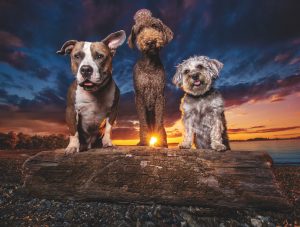 GROUP PHOTO TECHNIQUES
GROUP PHOTO TECHNIQUES
What to do when you encounter a gaggle of wild corgis.
Ah, I see. You didn’t think photographing one dog was hard enough? Now you want to graduate to two? Three? Four?! What are you, some kind of masochist? Forget dogs, at this point you might as well be photographing three dozen circus monkeys swinging off a technicolor jungle gym while wearing tiny hats.
Oh, don’t worry. I’m kidding (mostly).
Photographing multiple dogs together is most definitely a tough nut to crack, and likely one that will test all your saintly, dog-loving patience, but it’s by no means impossible. In fact, there’s nothing quite as rewarding as the feeling you get when you really nail an incredible group shot of a beautiful family of dogs. Take one wiggling, waggling, constantly moving fur ball and multiply that sucker. Maybe it’s two dogs together, maybe it’s four. (Shoot, you wanna go double black diamond? Maybe it’s two dogs and a cat!) No matter the exact group situation, the one guarantee is that these types of shots will give you the challenge of your life—but I’m here to help you conquer those ambitious shots with a few tried-and-true techniques that have lead me to success time and time again.
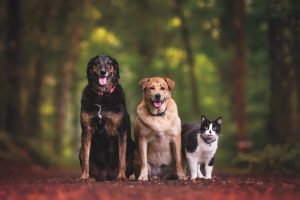
FIGURE 10.1 And yes! These group photo techniques can apply to friends of the feline variety, too! (I know what you’re thinking. This book is called Dogtography, isn’t it?! No one told me there’d be cats! Outrage! I demand to speak to a manager!)
Taming Twosomes with Your Trusty Tether
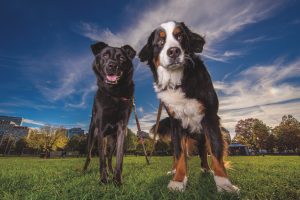
FIGURE 10.2 Brandy and Moose were perfect candidates for this “two dog tether” technique. Since they had the same length leashes, it was easy to tie them onto the stake and have them step forward until those leashes were taut, ensuring that they were standing side by side for their photo, both on the same focal plane (or at least pretty darn close to it!).
Don’t let the fun alliteration fool you, this technique is great for groups of nearly any size. For the purposes of our example, let’s say we’re photographing two Dachshunds. And to keep things interesting, let’s name them Booper and Beeper. It’s probably safe to say that, ideally, you’d like a photo where both dogs are in focus. In order to capture an image where both Booper and Beeper are in focus, you’ll need to get the two of them on the same focal plane. This means getting them standing (or sitting, or lying) shoulder to shoulder. Booper shouldn’t be in front of Beeper, or vice versa. This becomes especially important when shooting with a shallow depth of field, say around f/2.8.
Now, some dogs are well-trained enough to do this on their own with minimal commands from their owner. However, those dogs are the rarest of unicorns, and we’re here to talk about the vast majority of dogs you’ll encounter.
This is where our trusty in-ground stake once again saves the day. We’ve already covered how to use this for a single dog, but trust me when I say that this small metal accessory is an absolute godsend when photographing groups of dogs.
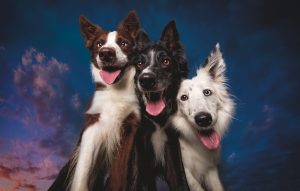
FIGURE 10.4 Envy, Trek, and Zain might as well have had rainbow horns growing out of their foreheads because they are three of those rare unicorn dogs that will pose for you on command. If only it were always so easy.
The key to this whole technique is simple: Both dogs should have the same length leash. It’s as easy as that. All it takes is a little communication with the dogs’ owner before your photo shoot. “Hey, could you make sure Booper and Beeper both have the same length leash? Thanks!” Of course, if you’ve failed to communicate this before the shoot, you could always cram two identical leashes into your bag and bring them along yourself for emergency backup.
Once your dogs are tethered, they’re both very likely to walk to the ends of their leashes and stay there (especially if you’re there to greet them with a delicious treat). Beeper and Booper will be standing shoulder to shoulder, and you can utilize the same techniques you would when photographing a single dog, using lots of positive reinforcement to make their tethered experience a happy one!
Putting Pups on Pedestals
As we discussed earlier in this book, sometimes placing your dog model up on something—perhaps a rock, a stump, or a bench—is the perfect way to get them to stay in one general area. This is just as true when working with multiple dogs.
The difficulty lies with finding objects that are both large enough for multiple dogs to fit on, and more importantly, safe enough should they decide to leap off. While it’s more difficult to find suitable objects to place multiple dogs on, it’s not to say they don’t exist. It’s just up to you to keep an eye out for them, and to unlock their potential as it relates to dog photography. Take this shot of Knox, Harper, and Bear for example. One day while out for a walk by the ocean I found a dock that, during low tide, sat fully on dry land. The dock stood about three feet off the ground, and I thought to myself (as only someone obsessed with dog photography would), “Hey, this would be perfect for putting dogs on!” The dock was wide enough to easily accommodate multiple dogs. More importantly, it was the perfect height. It was tall enough to make potential dog models think twice about jumping off, but short enough so there was a nearly 0% chance of injury if they did. And wouldn’t you know it, when we popped Knox, Harper, and Bear up on the dock, they all strolled right to the end, where their owner and I were waiting with lots of treats (and, a camera, of course).
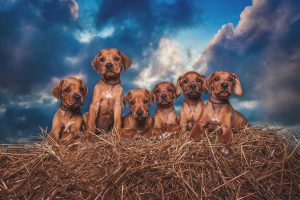
FIGURE 10.5 How do you get six constantly moving puppies to stay in one spot? A conveniently placed hay bale, of course.
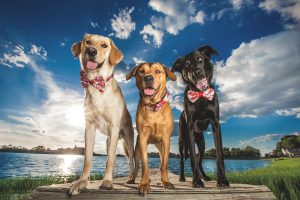
FIGURE 10.6
This dock was the perfect size to fit these three pups, and in case you’re wondering, the surrounding water is about six inches deep. Safety first my friends!
Capturing Canine Kisses
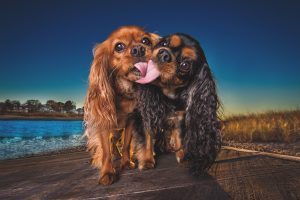
FIGURE 10.8 A serious question for all of you: What in this world is better than two dogs kissing? That’s a rhetorical question because, of course, the answer is nothing.
Nothing quite captures the bond between two animals like a shot of them “kissing.” I put that word in quotations because, of course, they’re not really kissing. But hey, if it conveys a message of love and bonding to our human brains, it’s ok in my book.
I must preface this section with a disclaimer. This method should only be tried with dogs from the same household. Make sure to check with your dog’s owner before attempting this to be certain that neither dog has a history of resource guarding, or similar behavior. As long as the two dogs are best buds, and you’ve done your due diligence by checking with their owner, give this a shot!
It all comes back to one of my favorite items from the treat bag: Good ol’ PB. That’s right, peanut butter saves the day again! If peanut butter is not suitable for your dog model’s diet, you can try another easily lickable substance, like cream cheese or canned pumpkin.
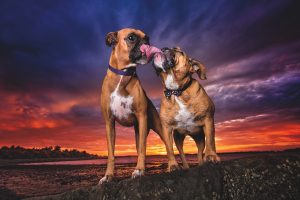 Gear-wise, I’ve found this shot more suitable for wider-angle lenses, since it allows me to work with the dogs up close. If you’re shooting with a longer lens, you’ll want the dog’s owner or an assistant to lend you a hand.
Gear-wise, I’ve found this shot more suitable for wider-angle lenses, since it allows me to work with the dogs up close. If you’re shooting with a longer lens, you’ll want the dog’s owner or an assistant to lend you a hand.
Take your peanut butter (or other lickable) and hold it out in front of you. Allow both dogs to lick from it at the same time. The messier they get the better! In fact, if they’re not getting messy enough, you can cheat by using your finger to place a small dab on the outside of their mouths. After a moment of this, pull your almost-certainly gross peanut butter hand back, and take a few shots. More often than not, once the actual container of peanut butter is out of the picture, your dog models will resort to licking the remaining peanut butter off of each other’s faces, mouths, and even tongues. If you haven’t figured it out yet, this is when you shoot. While you’re doing this, you’re of course reading their body language, making sure that each dog seems comfortable and happy with the experience. As long as you’ve done your job of gathering information from the owner beforehand you should be left with two pups that are happy to just kiss and kiss and kiss while your camera captures every glorious moment.

